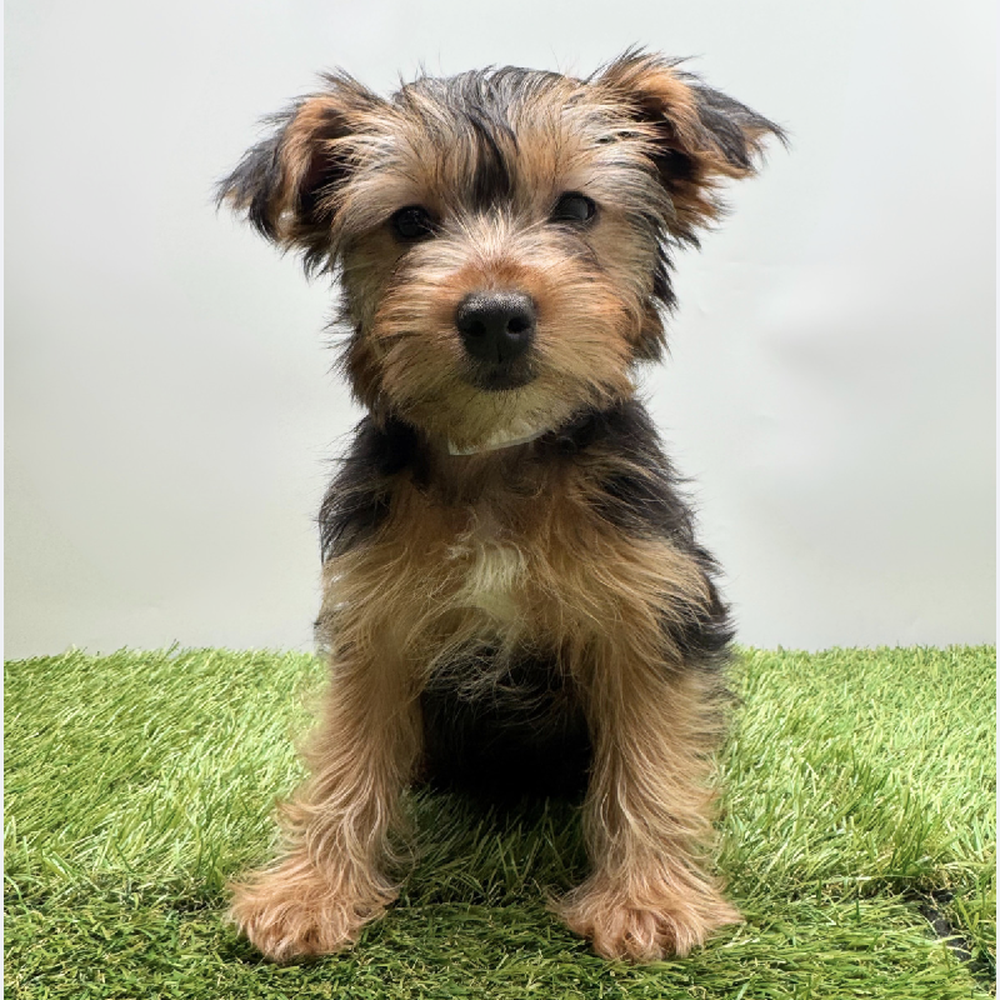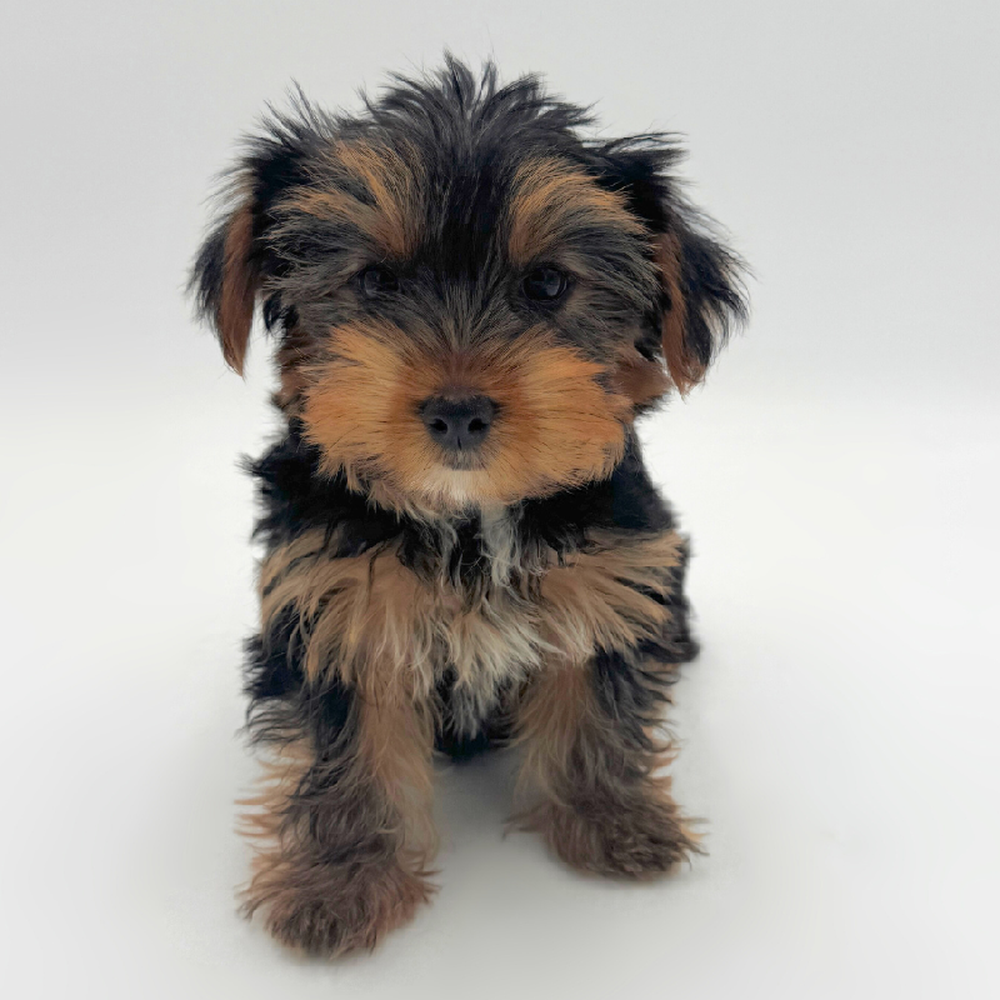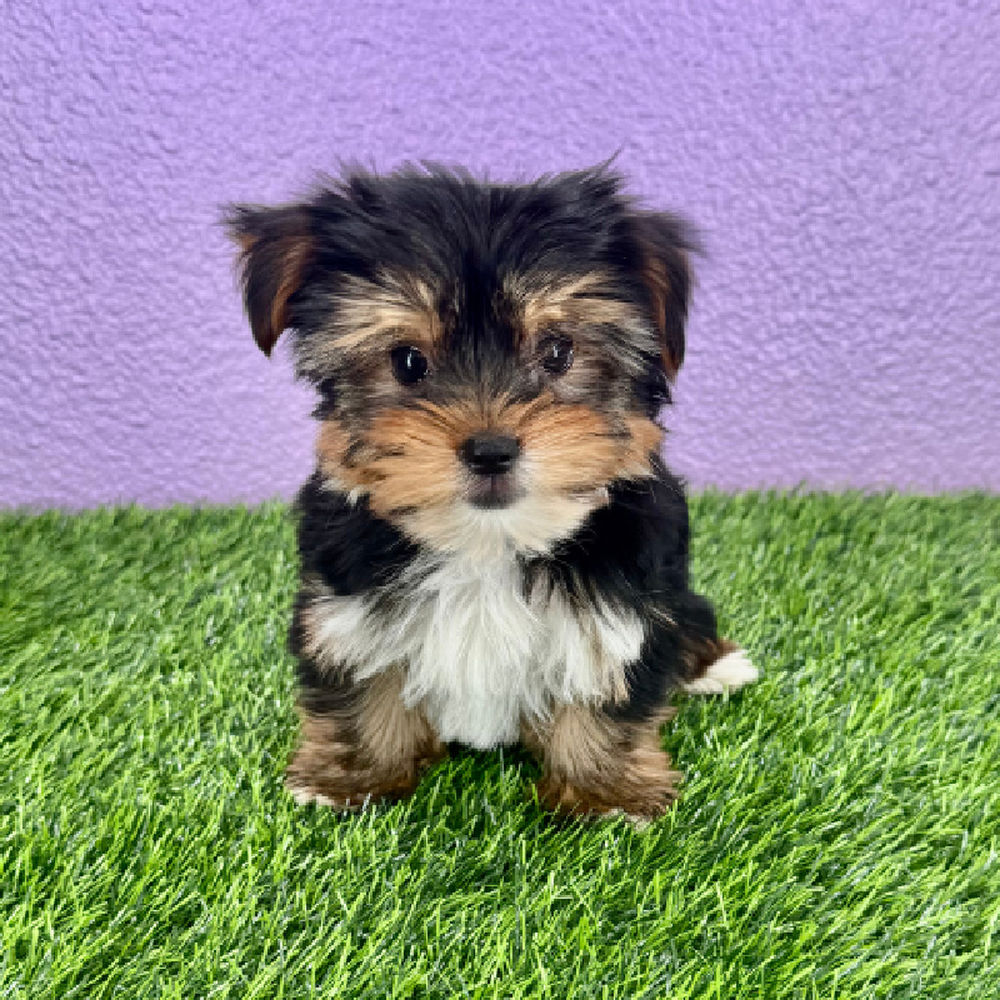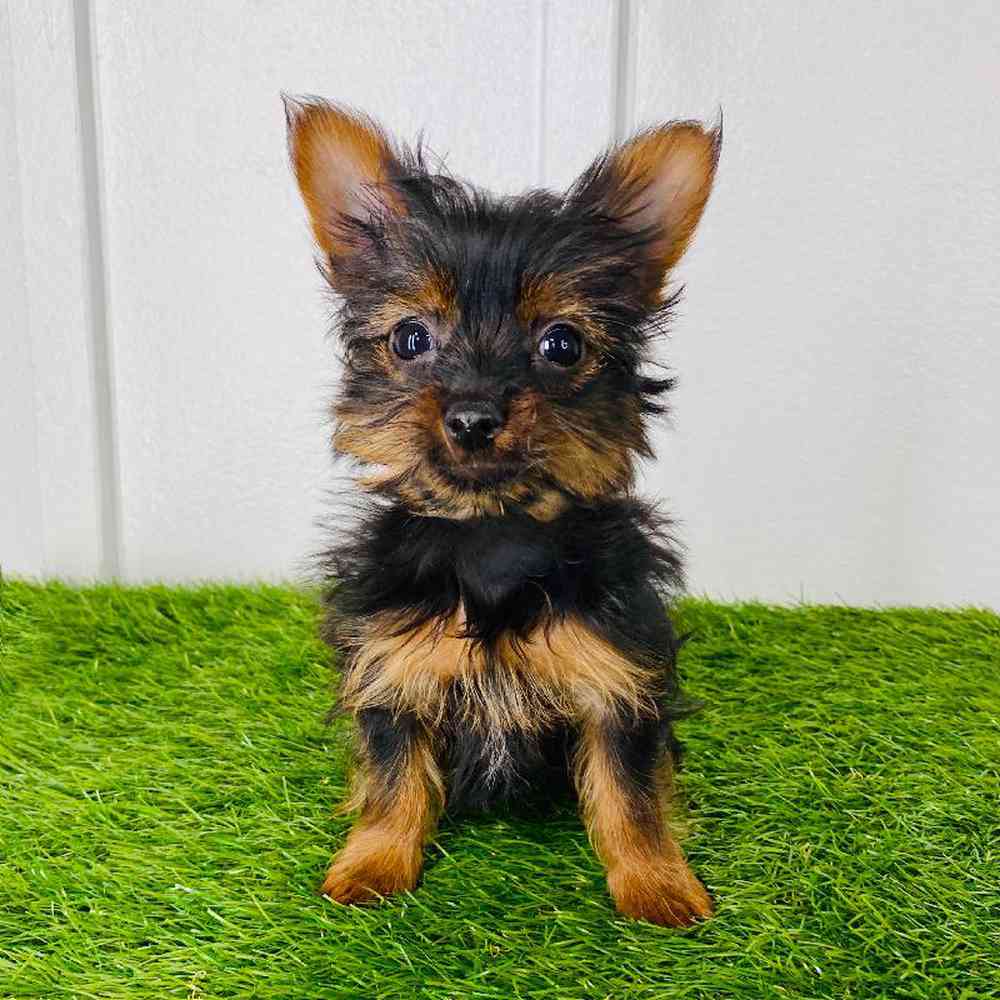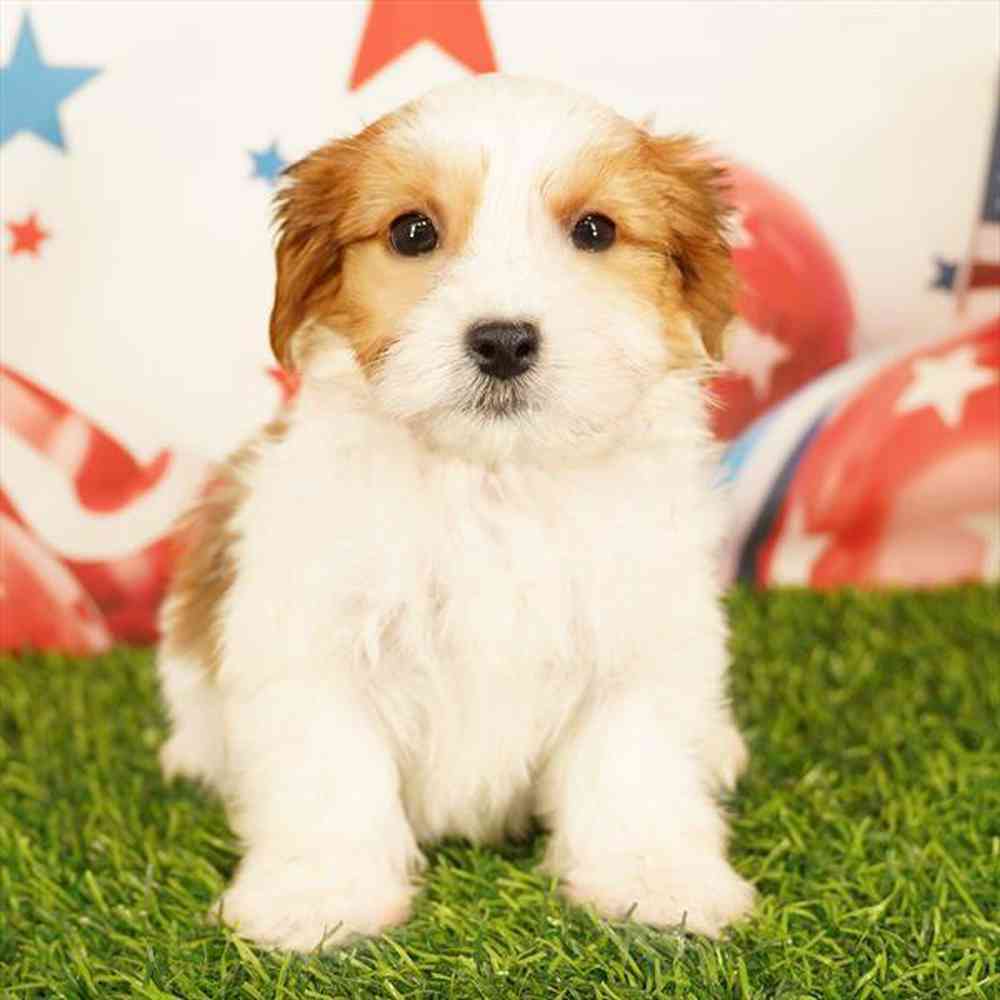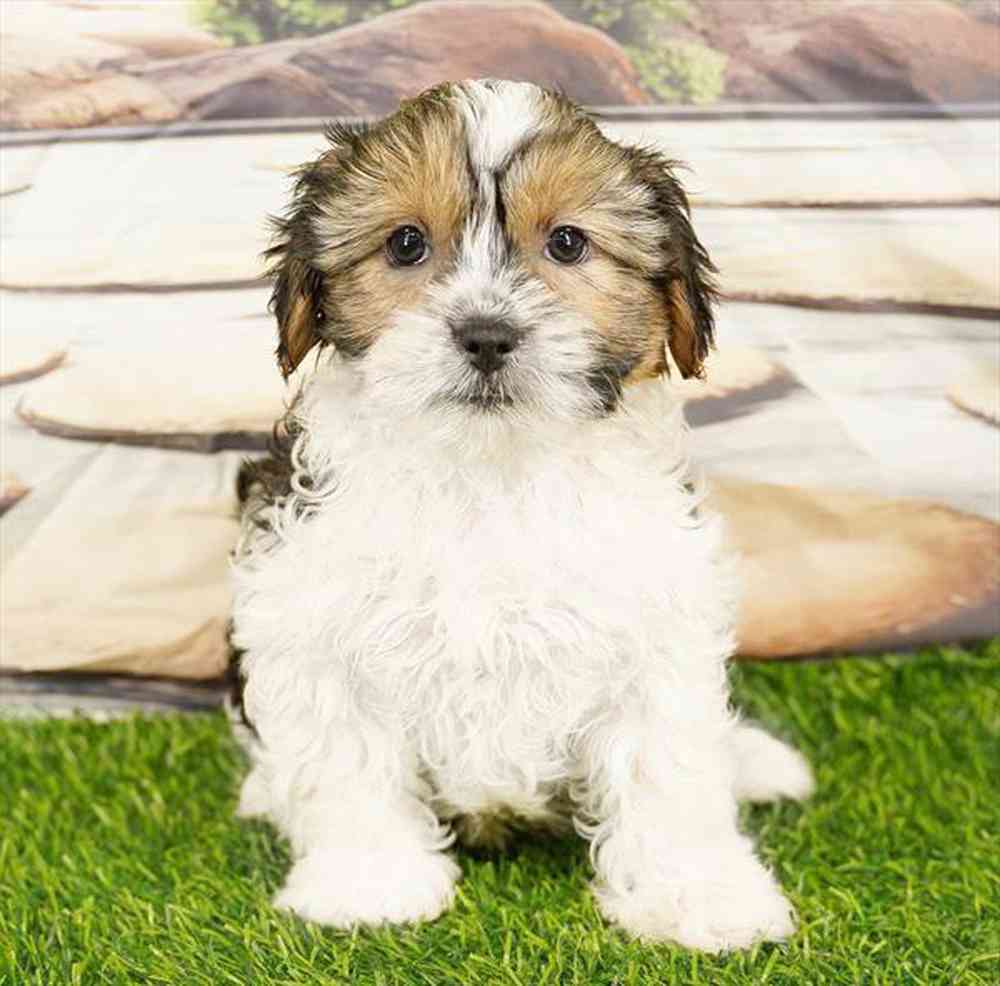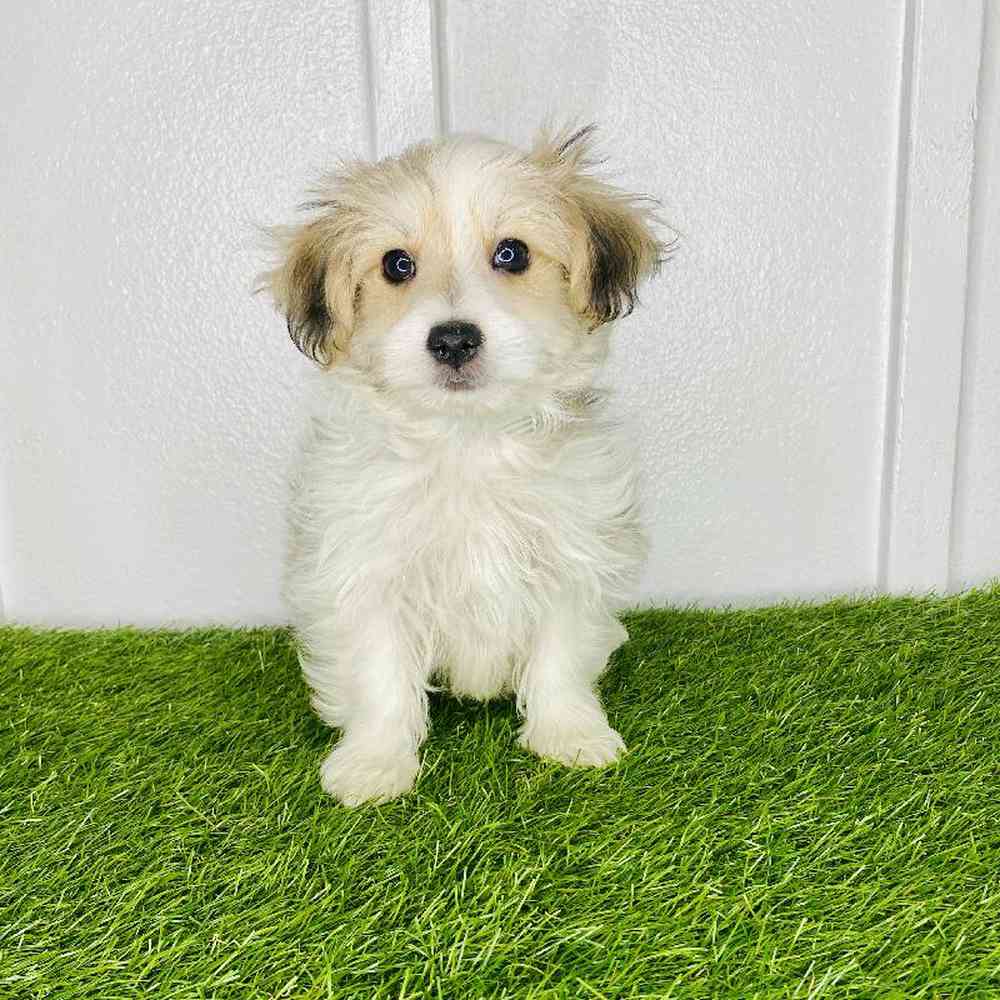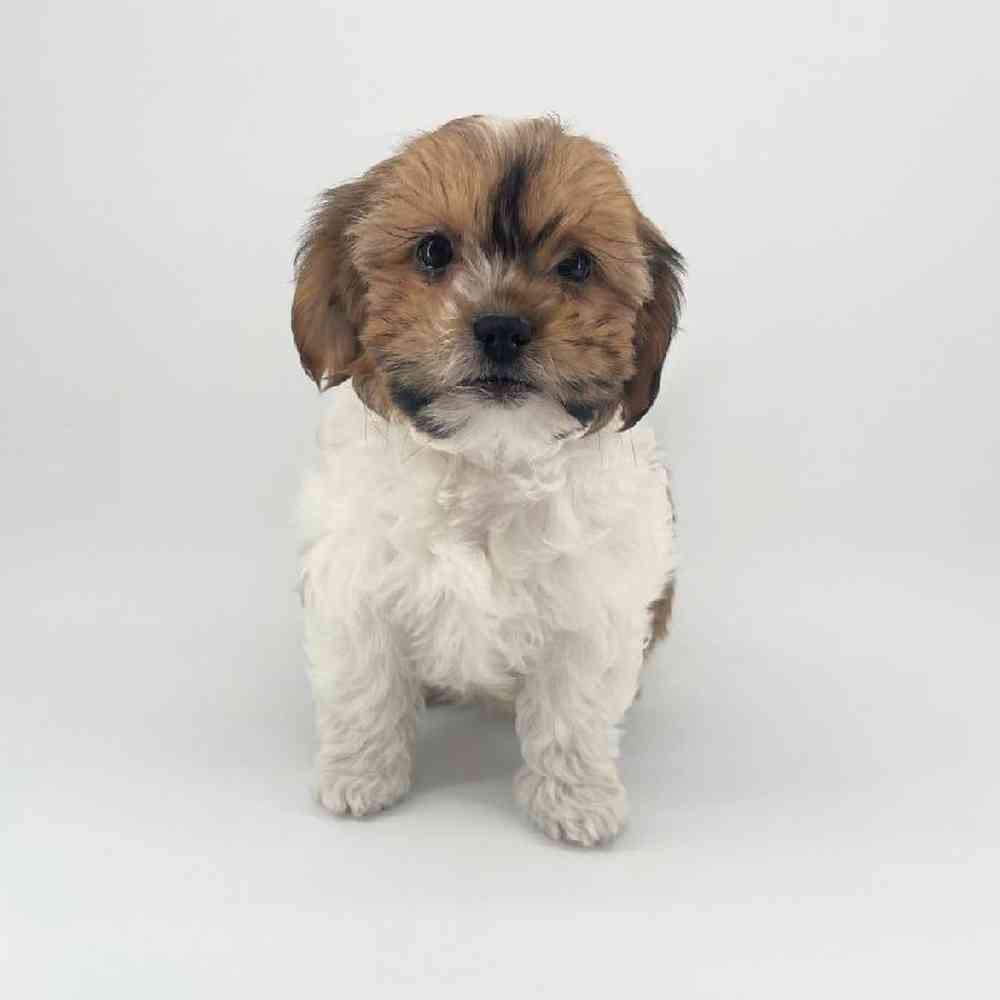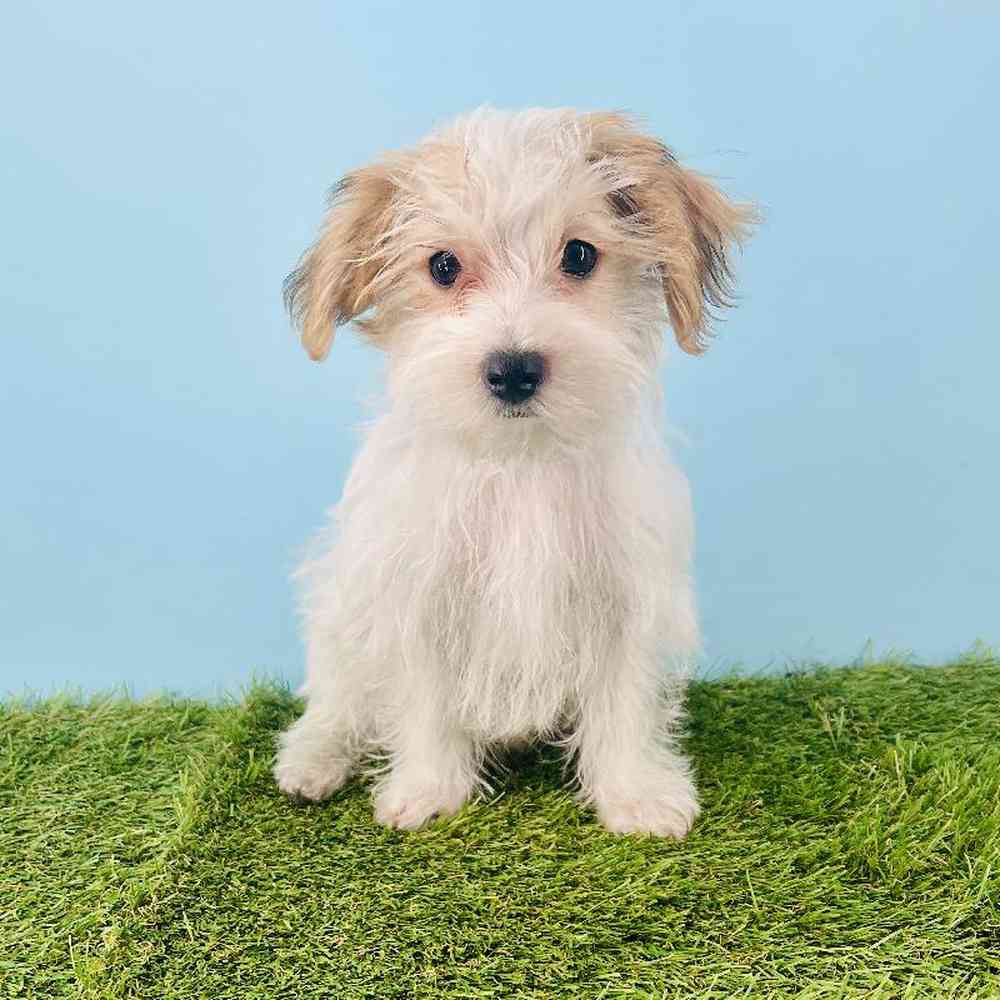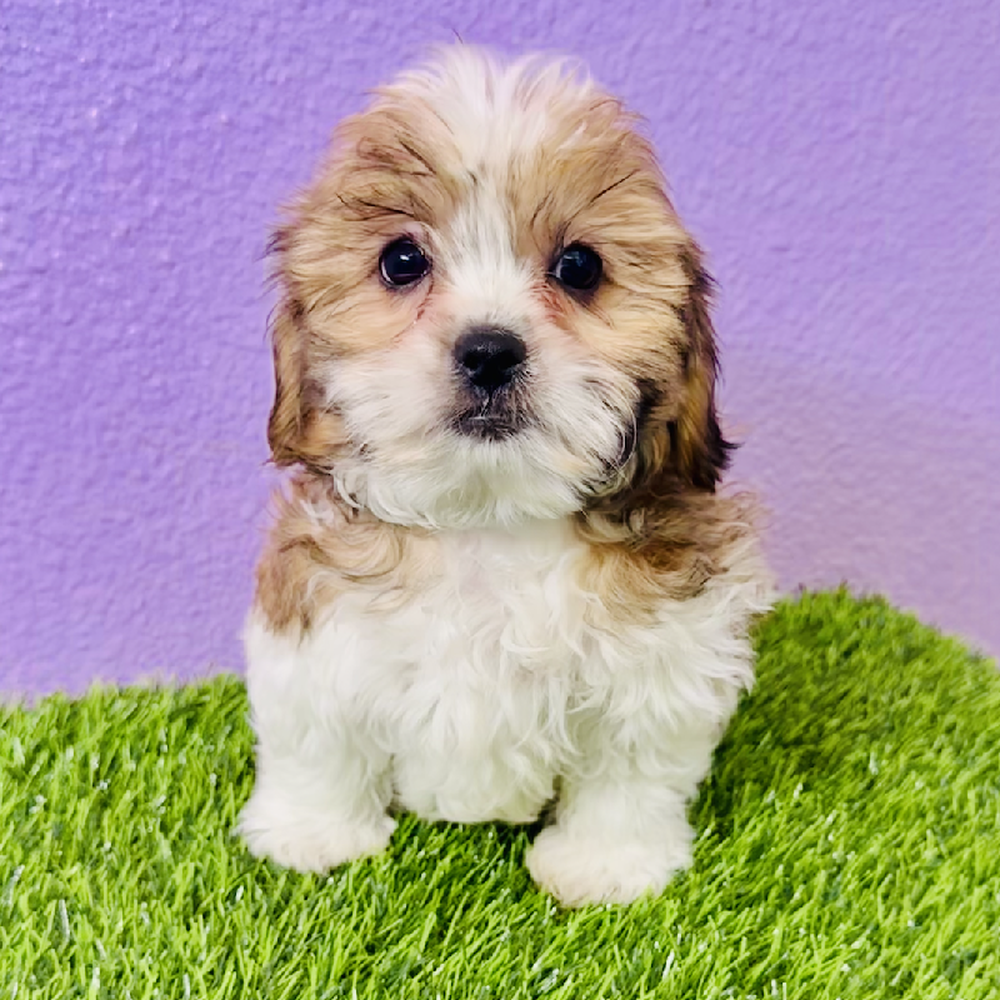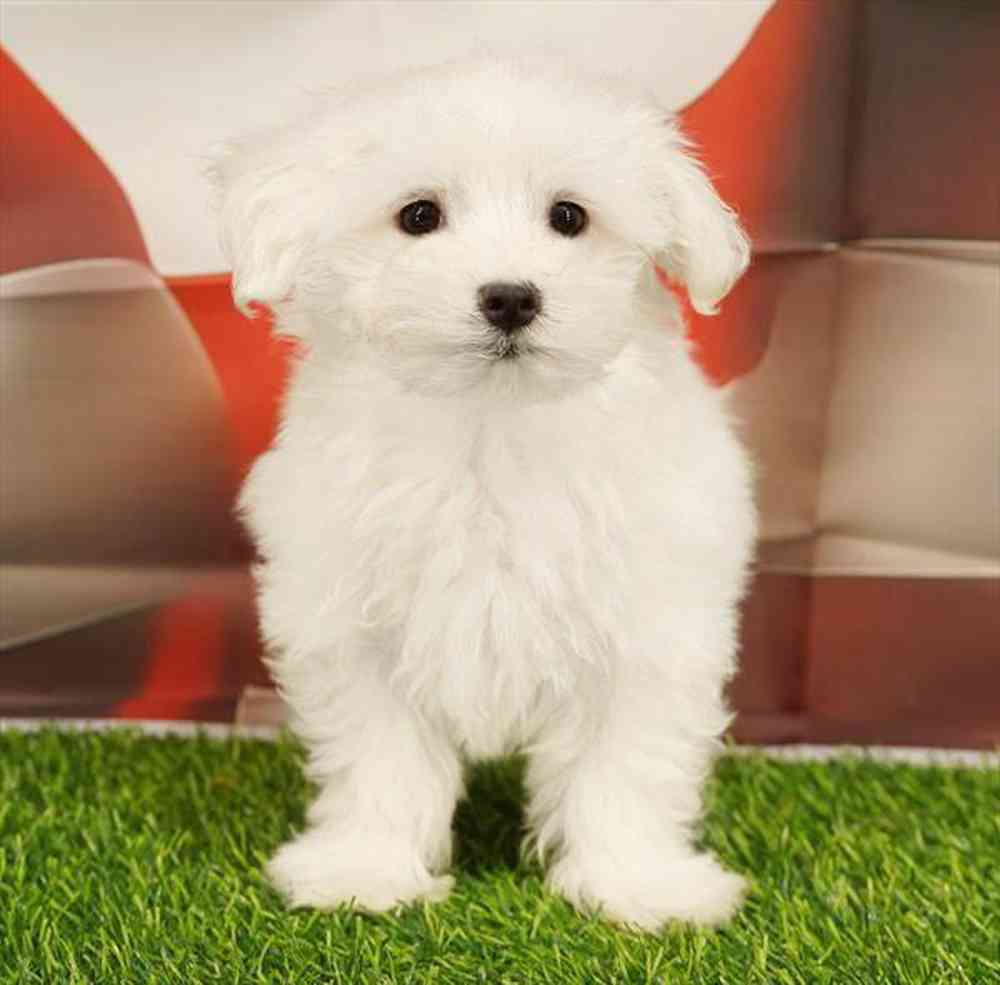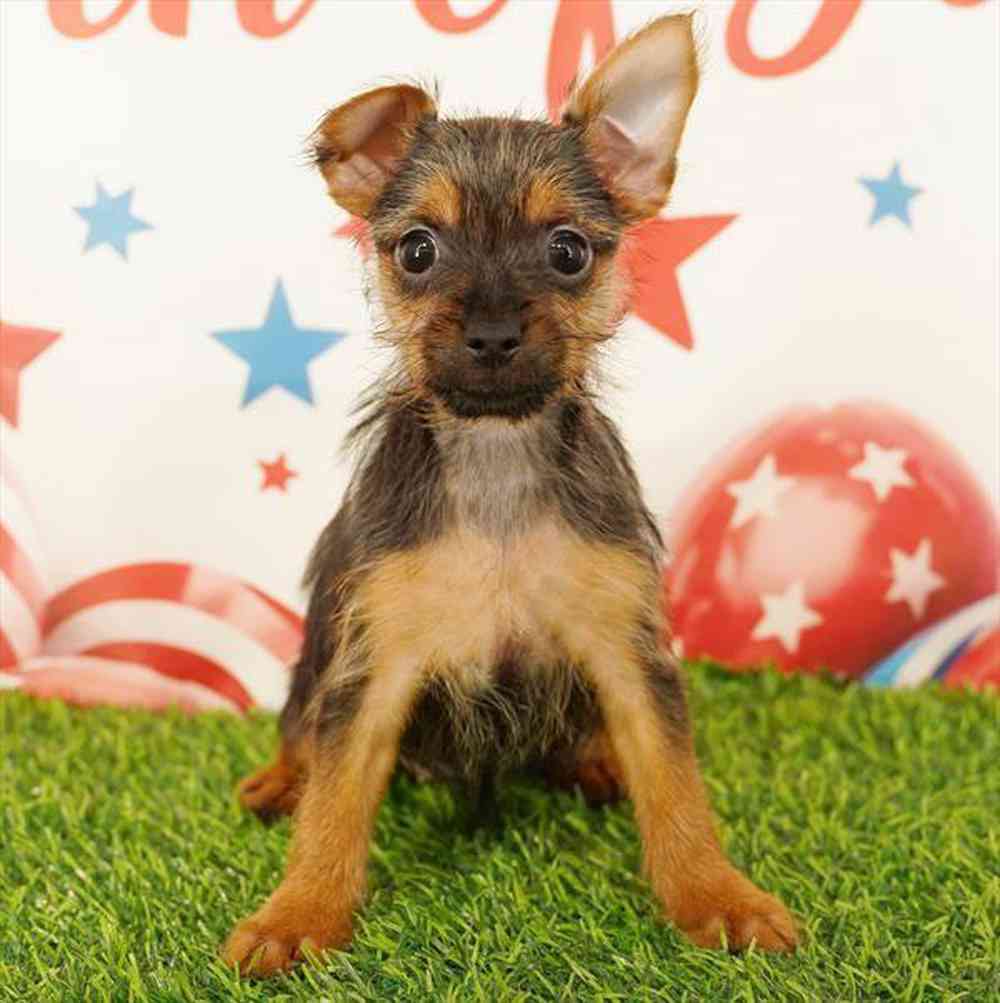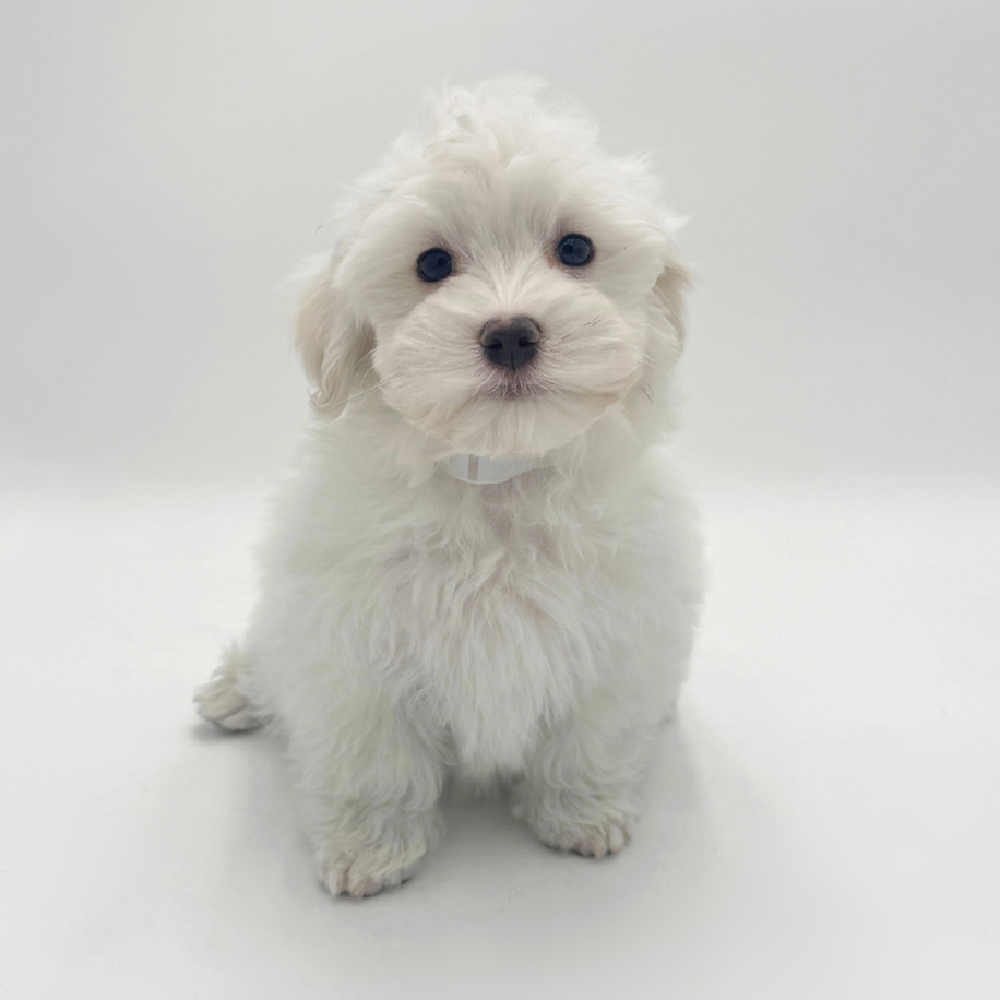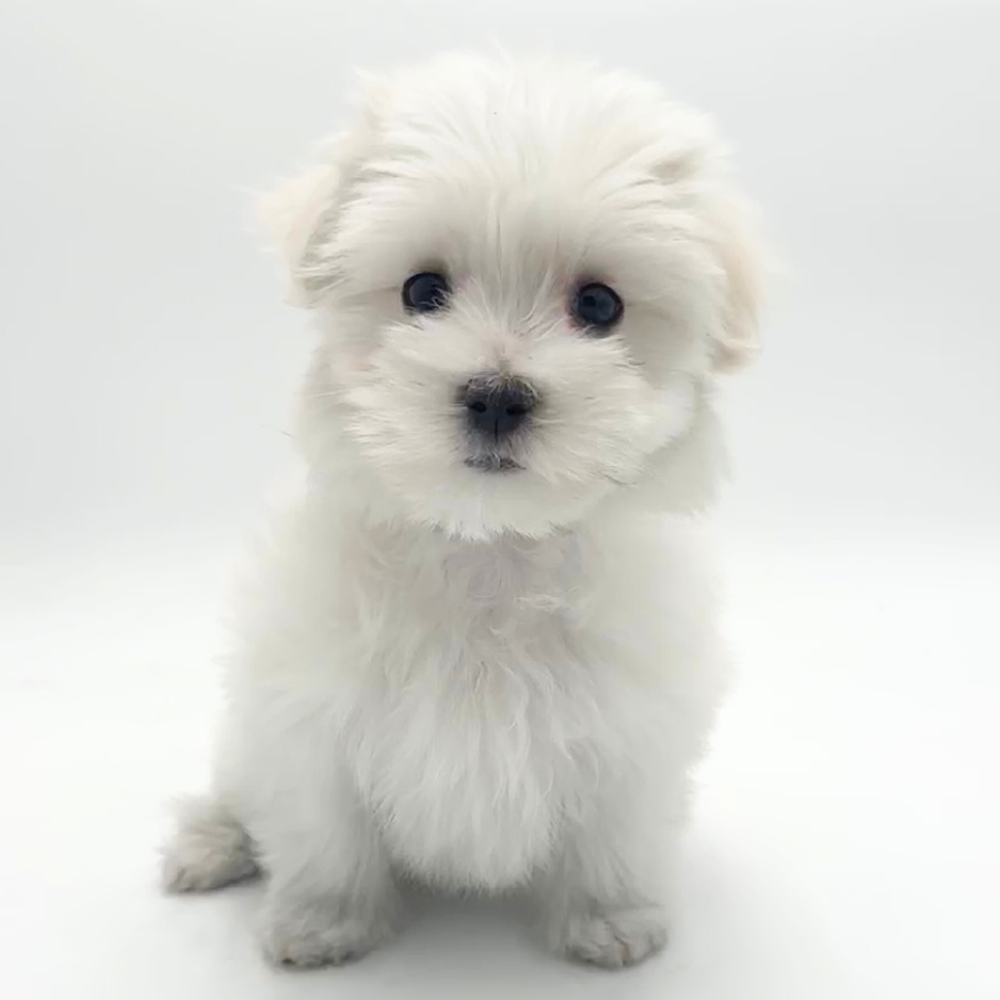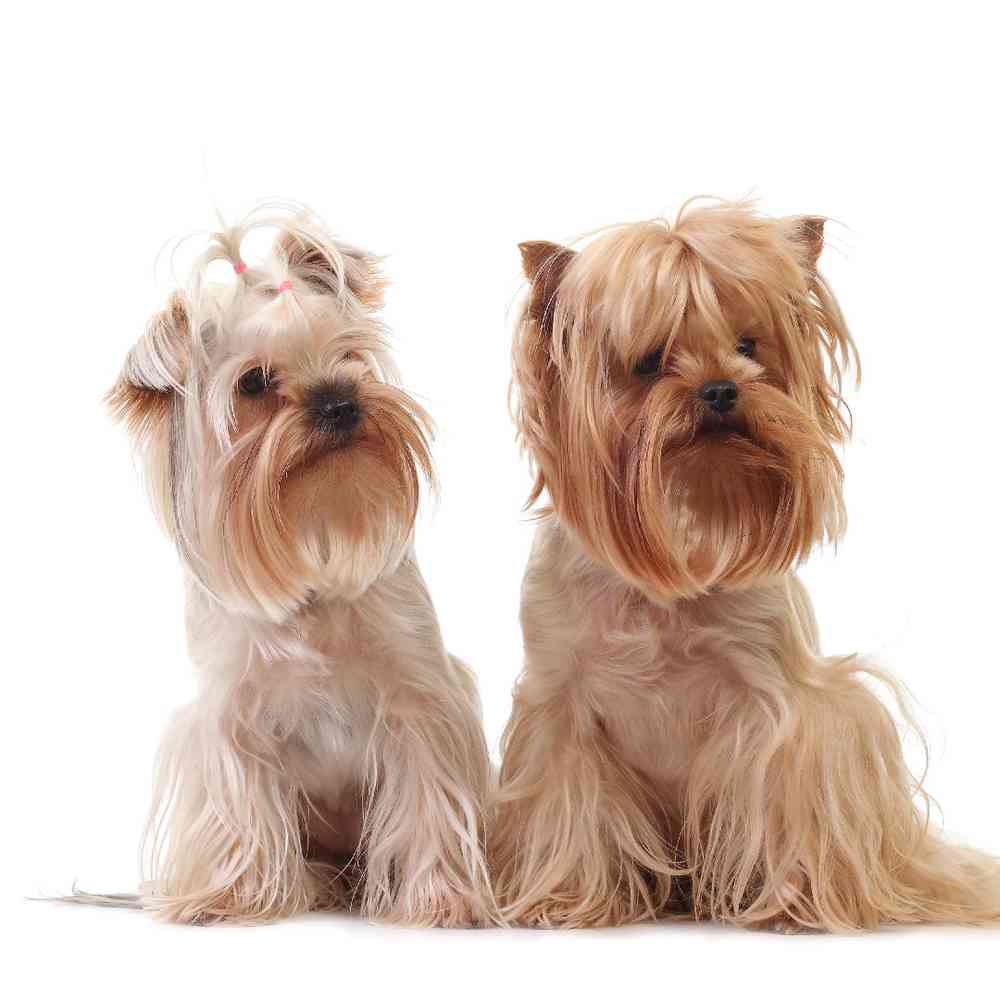
AKC Registrable
Hypo Allergenic
Apartment Friendly
Yorkie
Beneath the dainty, glossy, floor-length coat of a Yorkshire Terrier beats the heart of a feisty, old-time terrier. Yorkies earned their living as ratters in mines and mills long before they became the beribboned lapdogs of Victorian ladies.
Puppy Knowledge
Breed Standard
General Appearance
That of a long-haired toy terrier whose blue and tan coat is parted on the face and from the base of the skull to the end of the tail and hangs evenly and quite straight down each side of body. The body is neat, compact and well proportioned. The dog's high head carriage and confident manner should give the appearance of vigor and self-importance.
Size, Proportion, Substance
Weight: Must not exceed seven pounds.
Head
Small and rather flat on top, the skull not too prominent or round, the muzzle not too long with the bite neither undershot nor overshot and teeth sound. Either scissors bite or level bite is acceptable. The nose is black. Eyes are medium in size and not too prominent, dark in color and sparkling with a sharp, intelligent expression. Eye rims are dark, ears are small, V-shaped, carried erect and set not too far apart.
Body
Well proportioned and very compact. The back is rather short, the backline level, with height at shoulder the same as at the rump.
Leg and Feet
Forelegs should be straight, elbows neither in nor out. Hind legs straight when viewed from behind, but stifles are moderately bent when viewed from the sides. Feet are round with black toenails. Dewclaws, if any, are generally removed from the hind legs. Dewclaws on the forelegs may be removed.
Tail
Docked to a medium length and carried slightly higher than the level of the back.
Coat
Quality, texture and quantity of coat are of prime importance. Hair is glossy, fine and silky in texture. Coat on the body is moderately long and perfectly straight (not wavy). It may be trimmed to floor length to give ease of movement and a neater appearance, if desired. The fall on the head is long, tied with one bow in center of head or parted in the middle and tied with two bows. Hair on muzzle is very long. Hair should be trimmed short on tips of ears and may be trimmed on feet to give them a neat appearance.
Color
Puppies are born black and tan and are normally darker in body color, showing an intermingling of black hair in the tan until they are matured. Color of hair on body and richness of tan on head and legs are of prime importance in adult dogs, to which the following color requirements apply: Blue - Is a dark steel-blue, not a silver-blue and not mingled with fawn, bronzy or black hairs. Tan - All tan hair is darker at the roots than in the middle, shading to still lighter tan at the tips. There should be no sooty or black hair intermingled with any of the tan. Color on Body: The blue extends over the body from back of neck to root of tail. Hair on tail is a darker blue, especially at end of tail. Headfall: A rich golden tan, deeper in color at sides of head, at ear roots and on the muzzle, with ears a deep rich tan. Tan color should not extend down on back of neck. Chest and Legs: A bright, rich tan, not extending above the elbow on the forelegs nor above the stifle on the hind legs
Disqualifications
Any solid color or combination of colors other than blue and tan as described above. Any white markings other than a small white spot on the forechest that does not exceed 1 inch at its longest dimension.
Overview
Group
Toy
Temperament
Affectionate, Sprightly, Tomboyish, Yorkie
About
The Yorkshire Terrier is a compact, toy-size terrier of no more than seven pounds whose crowning glory is a floor-length, silky coat of steel blue and a rich golden tan. Don’t let the Yorkie’s daintiness fool you. Tenacious, feisty, brave, and sometimes bossy, the Yorkie exhibits all the traits of a true terrier. Often named the most popular dog breed in various American cities, Yorkies pack lots of big-town attitude into a small but self-important package. They are favorites of urbanites the world over. Yorkies are long-lived and hypoallergenic (the coat is more like human hair than animal fur), and they make fine little watchdogs. This is a true “personality breed,” providing years of laughs, love, and close companionship.
History
The Yorkshire Terrier was developed during the mid-1800s in the northern English counties of Yorkshire and Lancashire. It became a fashionable lapdog for proper English ladies in late Victorian times, but its beginnings were distinctly working-class. The breed is said to be the creation of weavers from Scotland who migrated to the English north country and brought their Scottish terriers with them. (We pause here to make the distinction between Scottish terriers, that is, terriers of Scotland, and the particular breed designated as Scottish Terriers.) Several breeds of now-extinct Scottish terriers are a part of the Yorkie’s genetic mix, along with such still-extant terriers as the Skye and Dandie Dinmont. One historical source suggests the addition of Maltese blood. The Scots weavers were proud of their tough little terriers, bred small enough to squeeze into the nooks and crannies of textile mills in pursuit of rodents. Jokes were made about the Yorkie’s long, silky coat, inferring that its finely textured hair was a product of the looms. The Yorkie’s home region was a center of mining as well as textile making, and many Yorkies were employed in coal mines as exterminators. The turning point in breed history came in 1886, when the Kennel Club (England) granted the Yorkie recognition. With this splash of publicity, the Yorkie became fashionable as a ladies’ companion. And, as the Yorkie’s popularity among the fashionable increased, its size decreased to better meet its new job description: adorable, amusing companion sitting in the lap of luxury. Yorkies were first seen in America in the 1870s, and the AKC recorded its first Yorkie, a female named Belle, in 1885.
Standard
That of a long-haired toy terrier whose blue and tan coat is parted on the face and from the base of the skull to the end of the tail and hangs evenly and quite straight down each side of body. The body is neat, compact and well proportioned. The dog’s high head carriage and confident manner should give the appearance of vigor and self-importance.
Nutrition
The Yorkshire Terrier should do well on a high-quality dog food, whether commercially manufactured or home-prepared with your veterinarian’s supervision and approval. Any diet should be appropriate to the dog’s age (puppy, adult, or senior). Some dogs are prone to getting overweight, so watch your dog’s calorie consumption and weight level. Treats can be an important aid in training, but giving too many can cause obesity. Learn about which human foods are safe for dogs, and which are not. Check with your vet if you have any concerns about your dog’s weight or diet. Clean, fresh water should be available at all times.
Grooming
The Yorkshire Terrier’s coat is very similar to human hair and should be treated accordingly. If the coat is kept long, it needs to be brushed daily. To avoid eye irritation, the hair on the upper part of the head should be trimmed short or pulled up into a topknot. The Yorkie will need a bath every week or so. Check the ears weekly for any debris or signs of infection. The breed’s national parent club, the Yorkshire Terrier Club of America, provides detailed grooming and bathing instructions on its website.
Exercise
Even small dogs require exercise to stay healthy, both mentally and physically. Yorkies will benefit from both moderate exercise, such as walks with their owner at a steady pace, as well as occasional short bursts of activity, such as chasing after a tennis ball in the backyard. A short walk twice a day will likely be enough for your Yorkie to see new scenery and burn off energy. Participating in dog sports such as obedience or agility also will provide beneficial activity to keep him healthy, while challenging his mind as well.
Training
Yorkies love their owners, and are very intelligent and eager to please. Offering effusive praise and treats for good behavior will work far better with the Yorkie than harsh corrections. Starting from an early age, the Yorkie should be socialized to strange situations, people, and other dogs. Take him into new situations slowly, and always in a calm and happy atmosphere. These should be positive experiences. Despite their small size, Yorkies can participate in and excel at canine activities such as rally, agility and obedience, and many Yorkies serve with their human partners in roles such as therapy work.
Health
Yorkshire Terriers are generally healthy dogs, and responsible breeders screen their stock for health conditions such as eye anomalies and luxating patella, a dislocated kneecap once called a “trick knee” in humans. To help avoid the latter, care should be taken to limit the Yorkie’s jumping height, especially as a puppy.




